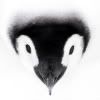Scientists look into why fault ruptured
KIRAN CHUG
Other fault lines are likely to be more stressed than the one that produced the fatal rupture 17 kilometres underground.
Scientists now have their work cut out trying to understand why it was this fault that resulted in Tuesday's devastating quake – and what risks have been created in other already stressed areas.
GNS Science natural hazards manager Kelvin Berryman said the magnitude 6.3 earthquake was an aftershock of the Darfield quake, although it was on a different fault line.
Aftershocks had been spreading both east and west from Darfield since September 4, increasing the stresses in the earth's crust in the Canterbury region – and creating "clouds" of aftershocks at both ends of the main fault rupture.
GNS Seismologist Bill Fry said scientists were trying to understand why the fault which ruptured to produce Tuesday's fatal earthquake had become so stressed. "This certainly wasn't one of the most stressed areas."
When fault lines rupture, the stress is dislocated and spreads out to other faults, which pose varying risks of also splitting and producing more earthquakes.
However, calculations done after September 4 had not shown the area where last week's earthquake occurred to be high risk, Dr Fry said.
Seismologists wanted to understand more about the mechanics of Tuesday's 6.3 quake and what impact it could have on other faults – particularly those already believed to be very stressed after the Darfield event.
"A lot of our efforts are going into understanding this problem."
One area which had been identified as particularly stressed had been Hororata on the Canterbury plains, which had had aftershocks since September 4.
Scientists were also working on understanding why Tuesday's earthquake produced ground shaking or acceleration at 1.88 times the force of gravity, which Dr Fry said was "extremely high" for the magnitude.
However, its shallow depth in soft soils would have contributed, as would the possibility that "seismic waves" reflected off Banks Peninsula and bounced back to Christchurch.
GNS Science geologist Hamish Campbell said the earthquake's hypocentre – the location beneath the earth – could have been as shallow as three to five kilometres.
Its source was about half way between Lyttelton and Sumner, right under the north portal to the tunnel.
The 17km-long rupture along the fault plane was on a very steep angle, beginning at a depth of 3km and ending 12km underground.
The fault was effectively "blind" because it could not be seen on the ground's surface, and while it did not connect with the Greendale fault, it was part of the same system of faults which ran in the same east-west direction, Dr Campbell said.
tDr Berryman said geologists had suspected for some time that there were buried and unrecognised faults in Canterbury.
Some may have not moved for many thousands of years, but had been reactivated as stresses in the earth's crust had been redistributed since September.
Many geologists believed that modern-day tectonic plate motions in the South Island had reawakened some of these very old faults, causing them to fail. The Greendale fault that ruptured in September's quake was one of these very old faults, he said.
- The Dominion PostSource
--
Got Penguins?
Penguin News Today
The Science of Penguins
The Gentoos are back! Come see them on live cam at:
Gentoo Penguins of Gars O'Higgins Station, Antarctica

__._,_.___
No comments:
Post a Comment